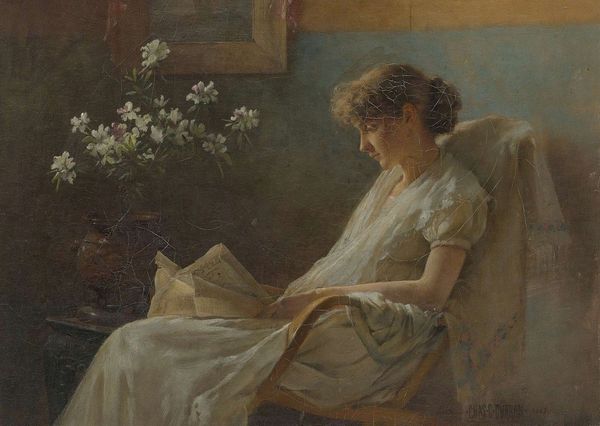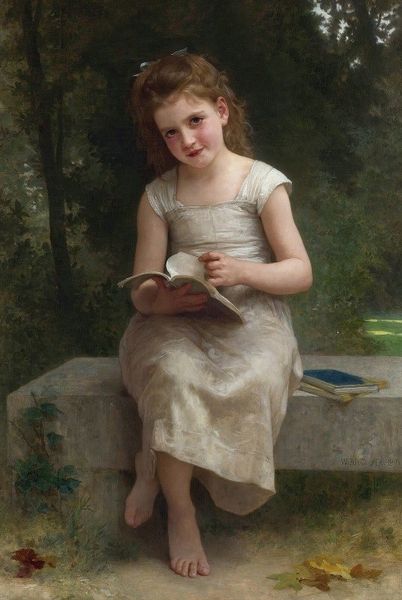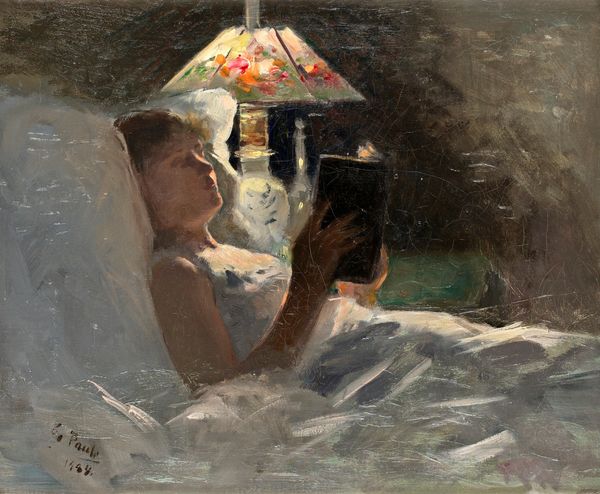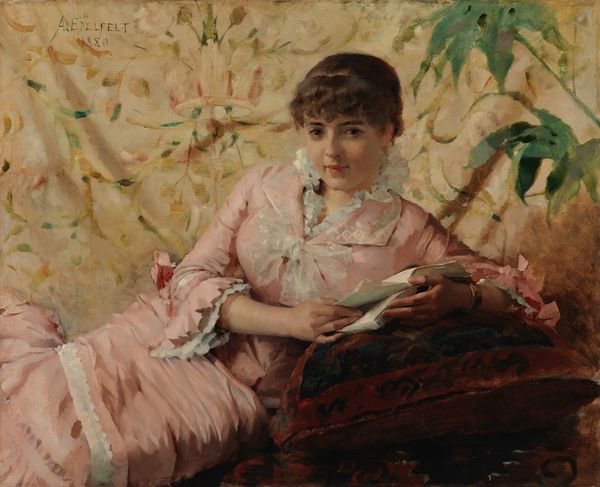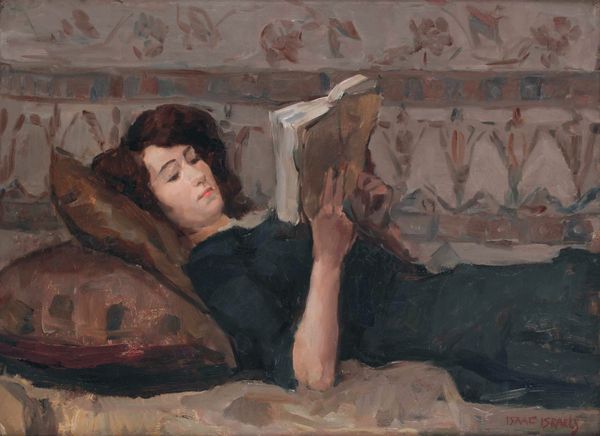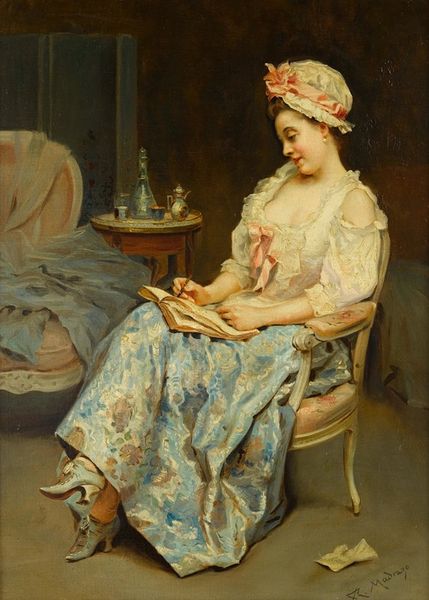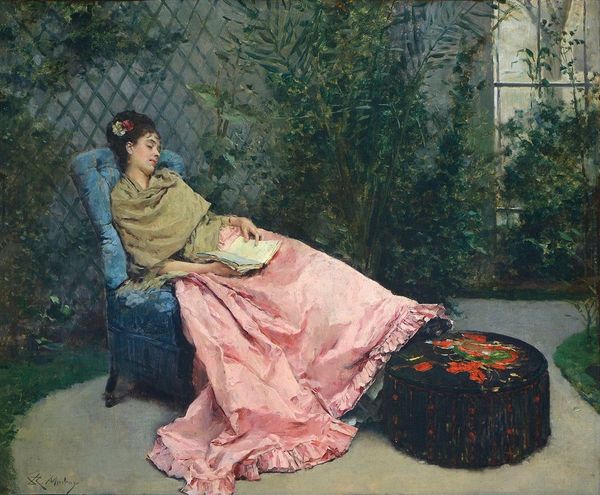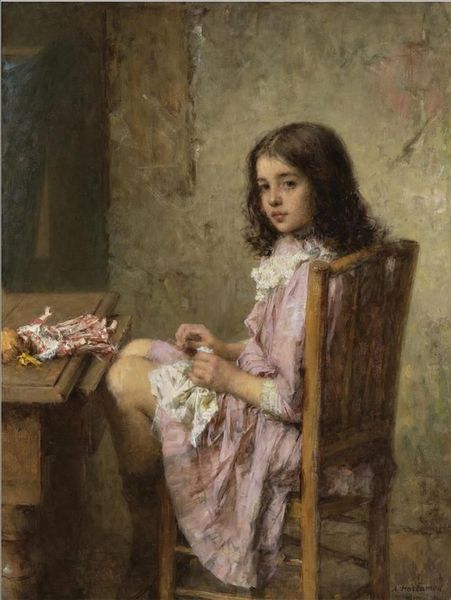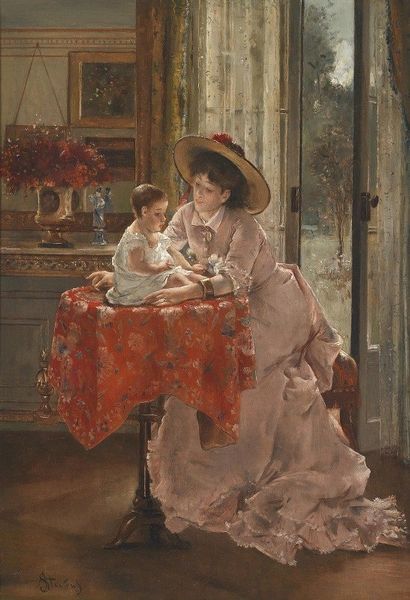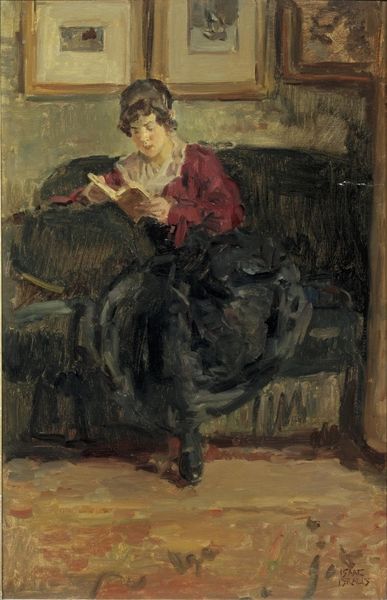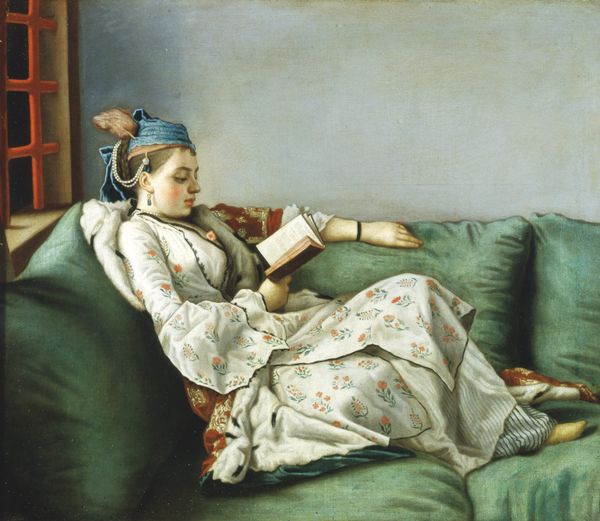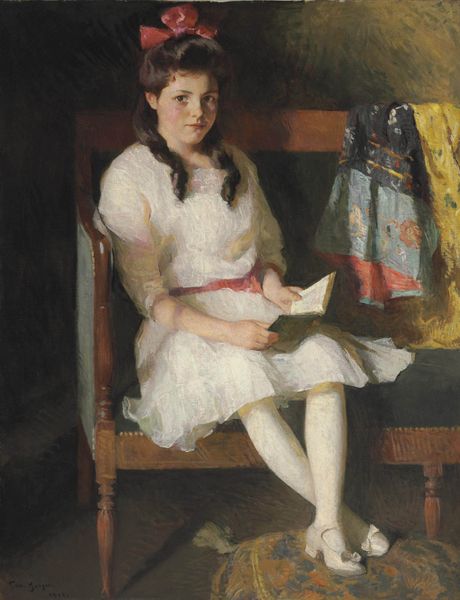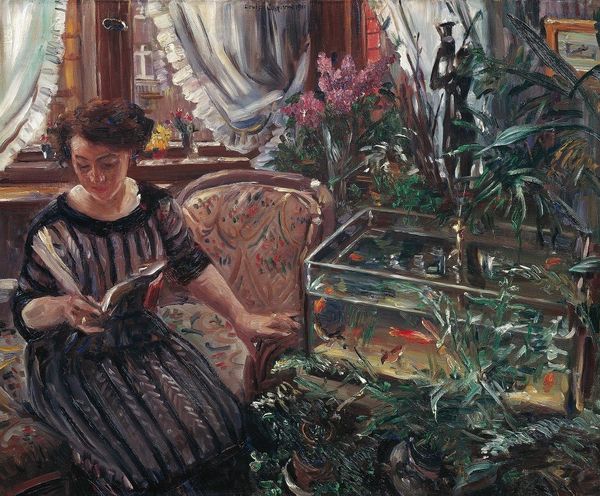
Copyright: Public Domain: Artvee
Editor: Here we have Albert Edelfelt's "Good Friends I" from 1881, done with oil paint. There's a serene feeling to this genre painting. It feels intimate, almost a peek into a private moment. I am curious: what stands out to you in this work? Curator: For me, it's about the materiality of childhood in the late 19th century. Look at the textures: the smooth oil paint rendering the silkiness of the dress, the slightly rougher application on the dog's fur, and the contrast of textures creates a sensory experience that speaks volumes about the consumption and crafting of class identity. Editor: Consumption of class identity? Curator: Exactly. Who had the leisure for a light-filled room, adorned with fresh-cut flowers? The textiles – the cushions, her clothing – were certainly not made at home; and all these objects signal wealth and social standing. How is labor represented or absent, and what does it mean to present these class assumptions through this seemingly harmless genre painting? Editor: I see. So, instead of simply observing a charming scene, we are asked to think about what went into creating it—the materials, the labor, and ultimately, the system that supports such leisure. Curator: Precisely! The art isn't just in the aesthetic, it’s in the social relations embedded within the image’s production and reception. The artist is showing an upper class young girl, surrounded by signs of wealth, such as the quality textiles, but omitting details of how that material environment came into existence. Editor: I hadn't considered it that way. I focused more on the "friendship" suggested in the title. It is revealing to examine how objects reflect complex social structures, particularly consumption of those materials that indicate social standing.
Comments
No comments
Be the first to comment and join the conversation on the ultimate creative platform.
